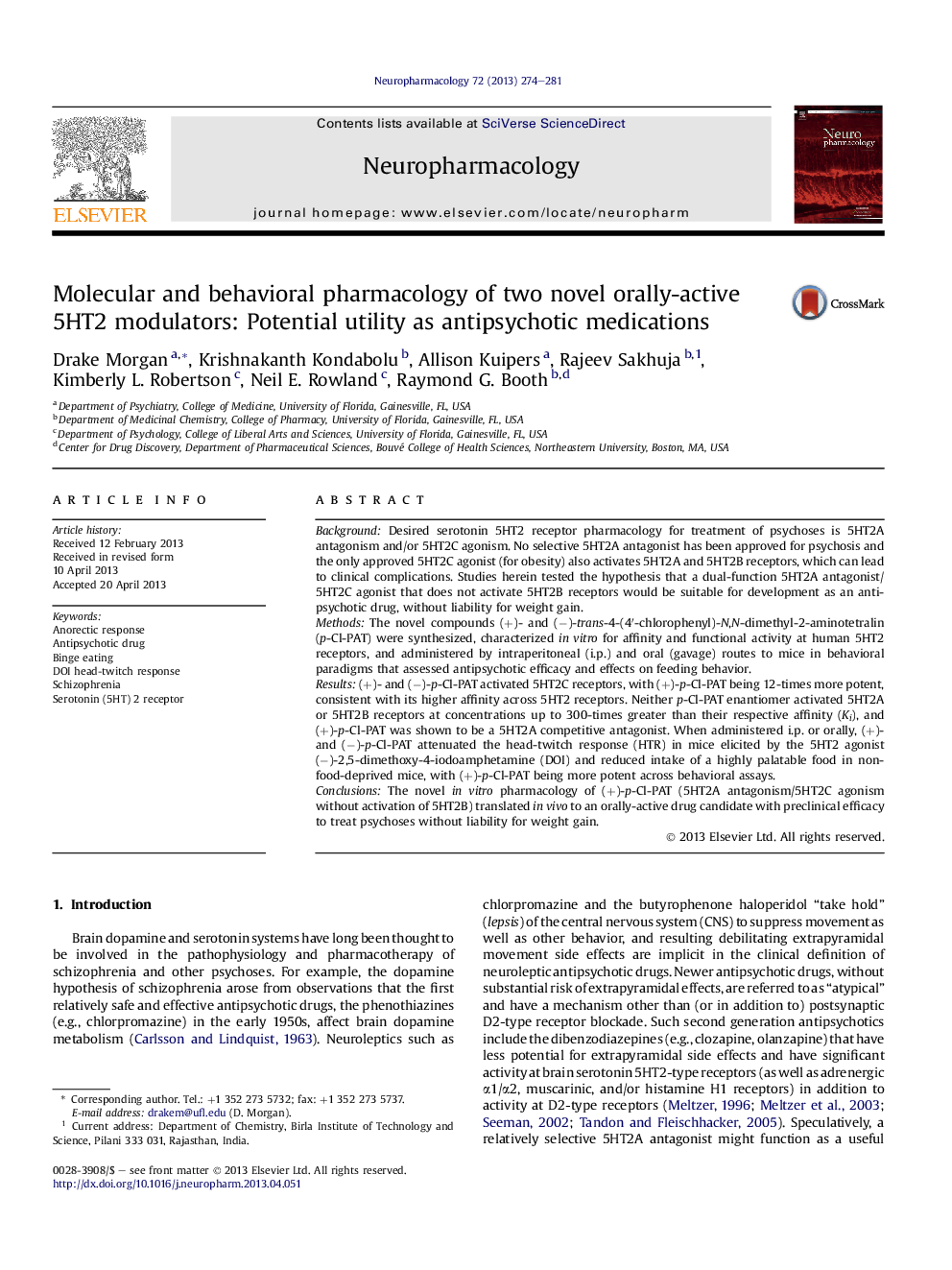| Article ID | Journal | Published Year | Pages | File Type |
|---|---|---|---|---|
| 2493473 | Neuropharmacology | 2013 | 8 Pages |
•Two 5HT2C agonists with 2A antagonist/inverse agonist activity were characterized.•These 5HT2 modulators demonstrated preclinical antipsychotic activity.•These novel compounds decreased consumption in a model of “binge-eating”.•Both compounds were behaviorally active when administered orally.
BackgroundDesired serotonin 5HT2 receptor pharmacology for treatment of psychoses is 5HT2A antagonism and/or 5HT2C agonism. No selective 5HT2A antagonist has been approved for psychosis and the only approved 5HT2C agonist (for obesity) also activates 5HT2A and 5HT2B receptors, which can lead to clinical complications. Studies herein tested the hypothesis that a dual-function 5HT2A antagonist/5HT2C agonist that does not activate 5HT2B receptors would be suitable for development as an antipsychotic drug, without liability for weight gain.MethodsThe novel compounds (+)- and (−)-trans-4-(4′-chlorophenyl)-N,N-dimethyl-2-aminotetralin (p-Cl-PAT) were synthesized, characterized in vitro for affinity and functional activity at human 5HT2 receptors, and administered by intraperitoneal (i.p.) and oral (gavage) routes to mice in behavioral paradigms that assessed antipsychotic efficacy and effects on feeding behavior.Results(+)- and (−)-p-Cl-PAT activated 5HT2C receptors, with (+)-p-Cl-PAT being 12-times more potent, consistent with its higher affinity across 5HT2 receptors. Neither p-Cl-PAT enantiomer activated 5HT2A or 5HT2B receptors at concentrations up to 300-times greater than their respective affinity (Ki), and (+)-p-Cl-PAT was shown to be a 5HT2A competitive antagonist. When administered i.p. or orally, (+)- and (−)-p-Cl-PAT attenuated the head-twitch response (HTR) in mice elicited by the 5HT2 agonist (−)-2,5-dimethoxy-4-iodoamphetamine (DOI) and reduced intake of a highly palatable food in non-food-deprived mice, with (+)-p-Cl-PAT being more potent across behavioral assays.ConclusionsThe novel in vitro pharmacology of (+)-p-Cl-PAT (5HT2A antagonism/5HT2C agonism without activation of 5HT2B) translated in vivo to an orally-active drug candidate with preclinical efficacy to treat psychoses without liability for weight gain.
